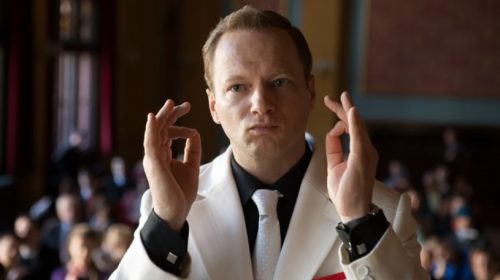Nieszawa is a town located on the left bank of the Vistula RRiver, right in its ice-marginal valley. It is a unique town, owing it to changes in its location, which has already happened twice during the 200 years of its existence. It was originally founded on the left bank of the Vistula River, at the altitude of Toruń where today you will find the town of Wielka Nieszawka.
It was exactly the location of signing the First Peace of Thorn, in 1411. Soon after signing the treaty, King Władysław II Jagiełło, who signed it himself, ordered the town to be levelled.
A year later, King Jagiełło started the building of Dybów Castle on the left bank of the Vistula River, just opposite Toruń. The settlement surrounding the castle was named Nieszawa. Given its location, it soon became a rival in profiting from trade, looking from the perspective of Toruń located on the very-opposite bank of the same river. It was the reason for the burghers in Toruń to seek help from the Teutonic Order, in order to destroy Nieszawa, which happened in 1430. Finally, in 1470, the settlement was transferred 30km up the Vistula River, to its present location.
Nieszawa is famous for its ferry crossing over the Vistula River, which connects the region of Kujawy with Dobrzyń Land. The ferry currently in use is named Nieszawa, and is the only vessel of its type in Poland. It is a very-original design, called a sidewheeler, which looks just like the steamers you will see on the Mississippi River.
The most-notable person to have come from Nieszawa is Professor Stanisław Nowakowski (the town has a museum dedicated to him), architectural theoretician, painter, teacher, writer, and, inter alia, author of the design of a chapel with the urn containing the heart of Tadeusz Kościuszki, at the Polish Museum in Rapperswil.
Among the greatest monuments to be found in Nieszawa is the Late-Gothic St. Hedwig Parish Church built at the end of the 15th Century, a monastery complex of the Franciscans from the 17th Century, which includes the Church of the Holy Cross, the neoclassical town hall built in 1821, and town buildings from the years 1822-1850, including both wooden and stone buildings, located mainly on ul. Kazimierza Jagiellończyka and on ul. 3 Maja, Kościuszki, Mickiewicza, and Sienkiewicza.
Polish filmmakers have not been indifferent to the charms of Nieszawa, and many of them have chosen the town as a setting for their films.
The first of such films was Wiosna, panie sierżancie/ It’s Spring, Sergeant with Józef Nowak in the leading role, a film made by Tadeusz Chmielewski, in 1974. The town of Trzebiatów shown in the film is, in fact, Nieszawa, where virtually the entire film was shot. In the moovie, one can see the Old Town, ul. 3 Maja, and other charming little streets located in the centre of Nieszawa, among many others.
In 2007, Nieszawa became a film set for Ballada o Piotrowskim/The Ballad of Piotrowski directed by Rafał Kapeliński, featuring, among others, Krzysztof Kiersznowski, Zbigniew Zamachowski, Elżbieta Janosik, and Zofia Merle.
The main protagonist is the eponymous Piotrowski (portrayed by Krzysztof Kiersznmowski), who appears to be an absolute loser. One day, he decides to change his life and pursue his own dreams of starting up a hairdresser’s salon.
Quite recently, the parish church in Nieszawa, inside of which one can find murals from the 16th Century and monumental wall paintings from 1629, depicting kings with the facial features of Kings Zygmunt III Waza and Władysław IV bowing down to the baby Jesus, as well as the ferry point and the ferry itself, became background for some of the scenes in the latest film by Janusz Majewski Excentrycy, czyli po słonecznej stronie ulicy/Eccentricity, or on the sunny side of the street.
Do you want to visit this place?
Use Google navigation




